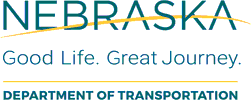Nebraska Local Technical Assistance Program

Nebraska Department of Transportation: Research Reports
Date of this Version
9-2020
Document Type
Article
Citation
Rahmani, M., Nsengiyumva, G., Kim, Y-R., and Hu, J. (2020). Evaluation of Mixtures and Pavement Performance for Rehabilitation Methods. NDOT Research Report SPR-PI (19) M084.
Abstract
Pavement rehabilitation practice involves milling an asphalt surface and placing a new layer. The incorporation of reclaimed asphalt pavement (RAP) mixtures brings cost savings and preserves the environment and natural resources. However, the use of recycled materials can compromise pavement performance, in particular, RAP can contribute to cracking because the mixtures with recycled materials become more brittle. In Nebraska, pavement rehabilitation has mostly been conducted by milling old 4-in. asphalt surface and placing a new 4-in. layer. Due to the potentially increased use of RAP mixtures for pavement rehabilitation, it is necessary to look into potential applications of RAP-induced overlay configurations that can save costs without compromising pavement performance. Toward that end, this research project selected six overlay mixtures containing RAP in different qualities. Mixtures were tested to identify mechanical and fracture properties in low and intermediate temperatures. Using these mixture properties, the thermo-mechanical behavior of asphalt pavements was predicted by conducting finite element simulations incorporated with cohesive zone fracture for both thermal cracking and reflective cracking. A total of seven overlay configurations (a seventh tested a 2-in. layer for comparison) were considered and compared. Pavement performance and predicted life from the finite element modeling were then used to conduct life cycle cost analyses (LCCA). Regarding load-induced reflective cracking, test and modeling results indicated that the conventional overlay practice with SPR mixture would perform similar with the case of 4.0-in. SLX and generally better than other cases considered in this study. In terms of thermally-induced cracking, pavement performance simulation results showed that the case with 4-in. SLX was the best, and cases with SLX on top generally perform better than cases with SPR. The overlays made with poor-quality RAP showed significant damage increase compared to those made with good-quality RAP. This implies a careful use and management of RAP is desired to sustain long-term pavement performance. LCCA based on reflective cracking results indicated that the 4.0-in. SPR is the most economical strategy compared to other alternatives considered in this study in terms of the agency costs. It can also be noted that the combination of 2-inch SRM + 2-inch SLX is a good option for colder regions in Nebraska, as the combined overlay showed almost similar reflective cracking behavior to and better in thermal cracking resistance than the conventional 4.0-in. SPR rehabilitation.

